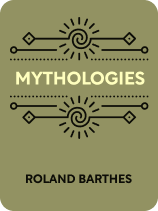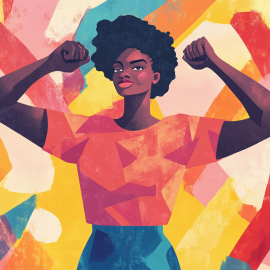

This article is an excerpt from the Shortform book guide to "Mythologies" by Roland Barthes. Shortform has the world's best summaries and analyses of books you should be reading.
Like this article? Sign up for a free trial here.
Is there a myth behind children’s toys? What symbolic meaning does the Jeep brand carry?
According to Roland Barthes, myths occur when society’s dominant institutions imbue an image, object, or phrase with meaning. Because myths are used to shape society, he believes it’s important to understand how myths are created and how they function.
Keep reading for Barthes’s ideas on mythmaking.
How Myths Are Created & Used
Barthes explains that a myth is a message that’s conveyed when an object, image, or phrase becomes associated with a concept or value and thus takes on a symbolic meaning. Myths shape the way we view the world, and they hold power over us when society’s dominant institutions craft these messages for us.
Barthes discusses how myths are created and utilized in society. It’s important to recognize this because myths are being employed every day to influence our thoughts and perceptions of the world.
According to Barthes, myth is essentially a means of culture creation. But, more specifically, he argues that it’s the creation of an “ideal culture” that obscures reality and diversity. And, particularly in the examples he analyzes, from 1950s France, he says myth is created by the “bourgeois” (upper-middle class) for the “petit bourgeois” (lower-middle class) and “proletariat” (working class). So, although Barthes doesn’t use the word, he’s essentially arguing that myth is propaganda.
He suggests that institutions in society (for example, the government, the fashion and advertising industries, and the media) create associations between certain signs and concepts, and the general population internalizes these associations and comes to see them as natural. For example, a Jeep is associated with outdoor adventure—this association is conveyed in all Jeep advertisements, and therefore a Jeep will appeal to people who think of themselves as outdoor adventure types.
Barthes specifically aims to critique the class constructs that underlie the myth in his own culture (1950s France). He says myth is like a mask that presents a falsehood and shields people from harsh realities, which serves to sustain the social order and reinforce class distinctions. As examples of this mythmaking, he points to examples of the way children’s toys are geared toward conformity to a world of work and social expectation rather than toward creativity. He describes such toys as hammers and trucks for boys and dolls and tea sets for girls to show that children are socialized into the roles they’ll be expected to play in society. He says that very few toys actually encourage free thought and creative expression.
(Shortform note: This is the reasoning behind the toys created for Waldorf schools—an alternative educational institution founded in Germany and now established throughout the world. Waldorf schools use simple toys that encourage the use of imagination, including faceless dolls. Excluding facial features from dolls serves the purpose of allowing the children to use their imaginations, and removes as much social “myth” as possible.)

———End of Preview———
Like what you just read? Read the rest of the world's best book summary and analysis of Roland Barthes's "Mythologies" at Shortform.
Here's what you'll find in our full Mythologies summary:
- The subtle messages that subconsciously shape the way we view the world
- How myths are used to reinforce cultural norms and values
- Why myths can pose dangers to society






